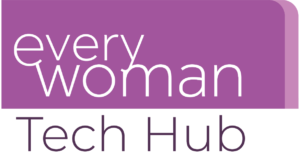
Women in tech in Lenovo’s Middle East and Africa teams are at an exciting juncture—one where key cultural milestones and the Women in Lenovo (WIL) initiative are enabling a new vision of the future for the region’s female talent.
As Marketing Director for Lenovo’s Intelligent Devices Group (IDG), Celeste Gibbens has spent over a decade navigating this changing landscape and has a unique perspective on both the challenges that remain for women—and the opportunities that lie ahead.
What are the challenges of managing teams with cultural differences?
Managing teams within the Middle East and Africa regions, I’ve learned that taking a single approach in how you deal with and communicate with your team is not an effective solution. You can have one message, but in communicating that out, you must be sensitive to cultural nuances, from tone and demeanour to cultural and religious norms. In my current team of 15 employees, we have 12 different nationalities, all bringing different perspectives, outlooks, and opinions.
What initiatives has Lenovo put in place to tackle issues around recruiting and retaining female talent?
Lenovo has many global initiatives around female talent but given the complexity of the Middle East and Africa, we have to be even more strategic about them here. From the bottom up, we have several programmes around graduate intake for STEM subjects, ensuring there is gender parity in the candidates, to offset the industry imbalance. When it comes to general recruitment, it’s important that we consider why women might be too intimidated to apply for our positions in tech. One example would be how we write job descriptions—for instance, are we actively talking about hybrid work solutions to remove the intimidation of applying for women with children?
How important are specialised strategies to support and encourage women in leadership in the region?
In the Middle East, we have more traditional gender roles, legal frameworks, and societal norms to overcome, making specialised strategies for women in leadership crucial. From a retention standpoint, our strategic mentorship programmes provide women with an understanding of the business while ensuring they acquire the knowledge, skill sets and organisational support to navigate the demands of the tech space. Further education opportunities are also essential for women in leadership, ensuring they are on par with their male counterparts when those high-visibility role opportunities become available.
What was your experience of working with an all-female team on the live activation of the Burj Khalifa (a light show on the world’s tallest building)?
Every marketeer has a pivotal moment where they think, ‘This is what I have been working for!’ Seeing the Lenovo logo lighting up the Burj Khalifa, the world’s tallest building, was that moment for me. The real beauty of the activation was that it was dreamed up and brought to life by a young woman in my team who managed it end-to-end. The significance of having an all-female team leading this initiative was that it not only gave them the confidence to pursue bigger things; it also raised their visibility internally, which has opened up more opportunities for them within Lenovo.
How important is Women in Lenovo and how does the initiative help move the dial?
Women in Lenovo (WIL) was a new thing for me when I joined. None of the competitors I’d worked for before had had anything similar, and now, having been actively involved in it, I believe it should be a necessity for all companies. Ultimately, for me, it’s about relatability. Magic happens when women sit around a table and talk about their challenges and wins.
What do you think are the biggest challenges for women in leadership?
We continue to observe under-representation of women at higher levels, with a particularly significant drop-off from lower-level roles to senior leadership positions. We need to start having a dialogue around those women at the mid-point of their careers to see how we can best grow their voices and get them a seat at the table by empowering them through education and proactive mentorship.
How vital is it for leadership diversity to make sure that women feel supported after having a child at that ‘mid-point’ of their career?
A decade ago, you would not be considered for roles if you had a two-year gap on your resume, especially in the tech world where things move so fast. Women are often in their biological prime in the middle of their careers, and while not all women want to take that route, for those who do, they now face the challenge of feeling like they’ll fall behind if they take time off, or even that they won’t be hired if they’re in this age bracket. Again, this comes down to embedding diversity and inclusion into the fabric of an organisation.
What is the best way to foster the next generation of female business leaders in the Middle East and Africa?
Firstly, we must accept that the younger generation not only brings a different perspective but also a wealth of understanding of our target audience. Our second responsibility is to mentor them; they have ambition, skill sets, education, and knowledge, but they still face many barriers when it comes to asserting their place in the tech space and progressing up the career ladder. Mentoring can also ensure that younger team members are given high-visibility opportunities, and it’s the role of the leader to foster that culture. I also think we need a mindset shift as the older generation, to realise that it’s beneficial if they progress faster than we did.
What are the biggest challenges faced by young women looking to enter the tech industry in your region?
There is still limited access to tech-specific training for women in this region, and we observe unequal access to quality education, particularly in many African countries. This remains a challenge, although UNESCO released data for this region shows that the enrolment of girls in higher education is almost double what it was a decade ago, so the hunger for women in tech is growing.
What is the biggest milestone you’ve seen around female empowerment in your region?
The most significant milestones are increased access to education for girls and, consequently, higher participation in the workforce. That might sound simple but it’s not. Considering all the cultural nuances in Africa and the Middle East, the rise of younger talent entering tertiary or higher education and securing graduate intern roles has been a significant movement for the region. The participation of women in the workforce at the beginning of 2023 in the Middle East was 19 percent; we’re now close to 22 percent.
The pressure the world has put on gender parity has catapulted this region into a reality check, giving me so much hope for what’s to come and who the next generation of women in tech will be. May they be a lot fiercer and more demanding than we were at that age, breaking barriers we were not able to as these milestones unfold.



